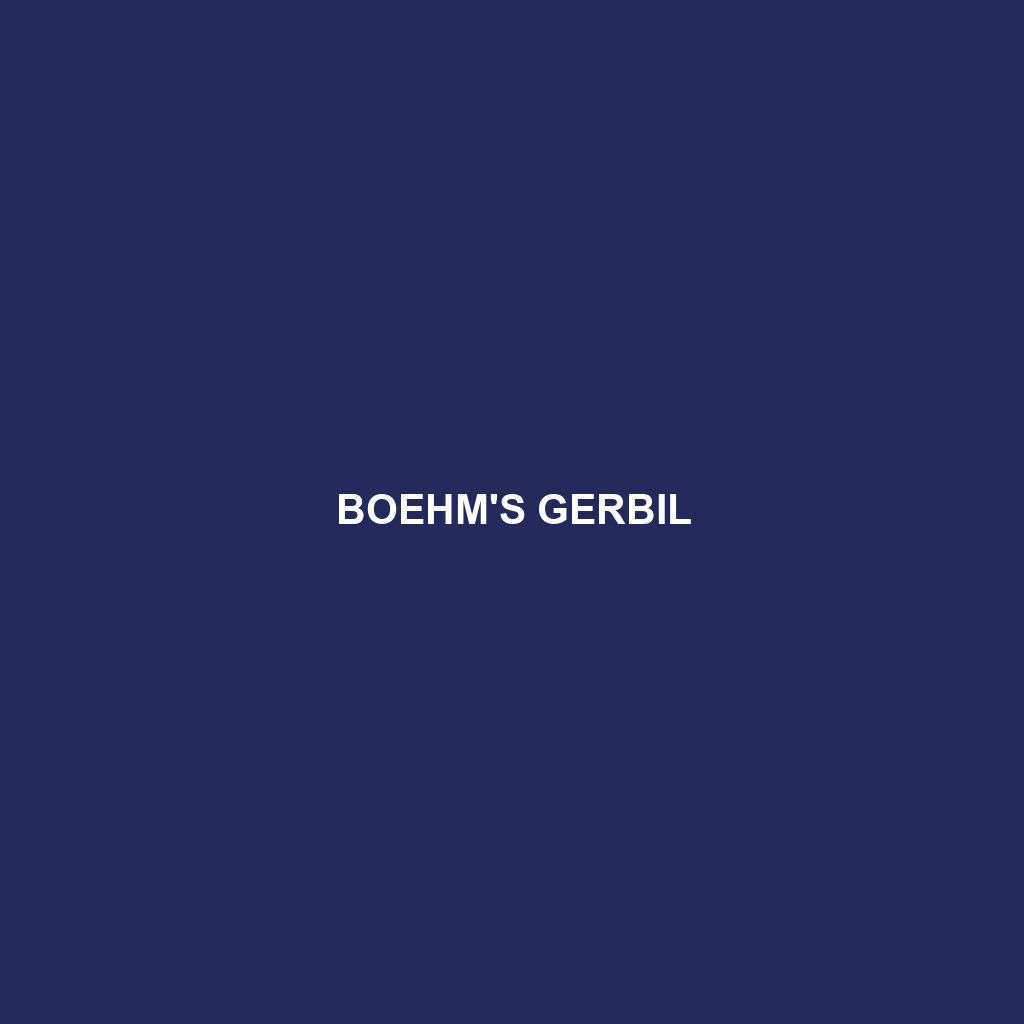Boehm’s Gerbil: A Comprehensive Species Description
Common Name: Boehm’s Gerbil
Scientific Name: Gerbillus boehmi
Habitat
Boehm’s Gerbil is primarily found in the arid and semi-arid regions of northeastern Africa, particularly in Egypt and the Sudan. These small rodents inhabit sandy plains, scrublands, and areas with sparse vegetation, which are essential for their survival. They prefer habitats that offer sufficient cover from predators while allowing for the easy diggings of burrows.
Physical Characteristics
Boehm’s Gerbil typically weighs between 80 to 120 grams and reaches a body length of about 10 to 15 centimeters, excluding the tail, which can be as long as their body. Their fur is generally a pale sandy or light brown color, which helps them blend into their natural environment. Distinctive features include large eyes adapted for nocturnal vision and long hind feet that facilitate quick movement across sandy terrain.
Behavior
These gerbils are primarily crepuscular, being most active during dawn and dusk. Boehm’s Gerbil exhibits social behavior, living in small family groups. They are known for their burrowing habits, constructing extensive tunnel systems that provide shelter from predators and harsh environmental conditions. Their ability to leap and move quickly helps them escape threats and navigate their sandy habitats effectively.
Diet
Boehm’s Gerbil primarily feeds on seeds, grains, and roots. They exhibit granivorous feeding habits, caching food in their burrows to consume during lean periods. Their diet plays a vital role in seed dispersal, making them important participants in their ecosystem. They are known to chew on various plants, which can also include leaves and stems, depending on seasonal availability.
Reproduction
The breeding season for Boehm’s Gerbil typically spans from late spring to early autumn. Female gerbils can produce several litters per year, with each litter consisting of 3 to 6 pups. Gestation lasts about 23 days, and pups are born hairless and blind, relying on their mother for sustenance and protection. The young are weaned at around 3 weeks and are mature enough to reproduce by the time they reach about 3 months old.
Conservation Status
The current conservation status of Boehm’s Gerbil is Least Concern according to the IUCN Red List. However, habitat destruction due to agricultural expansion and urban development poses potential threats to their populations. Continued monitoring of their habitats is essential to ensure their long-term survival.
Interesting Facts
Boehm’s Gerbil is noted for its ability to survive with minimal water intake, obtaining most of the moisture it needs from its diet. Additionally, they are exceptional diggers and can create burrows that extend several meters underground, providing a safe haven from extreme desert temperatures.
Role in Ecosystem
As herbivores, Boehm’s Gerbils play a crucial role in their ecosystem by aiding in seed dispersal. They interact with various plant species and contribute to soil aeration through their burrowing activities. Additionally, they serve as prey for various predators, including birds of prey and reptiles, thus forming an integral part of the food web in their habitat.
